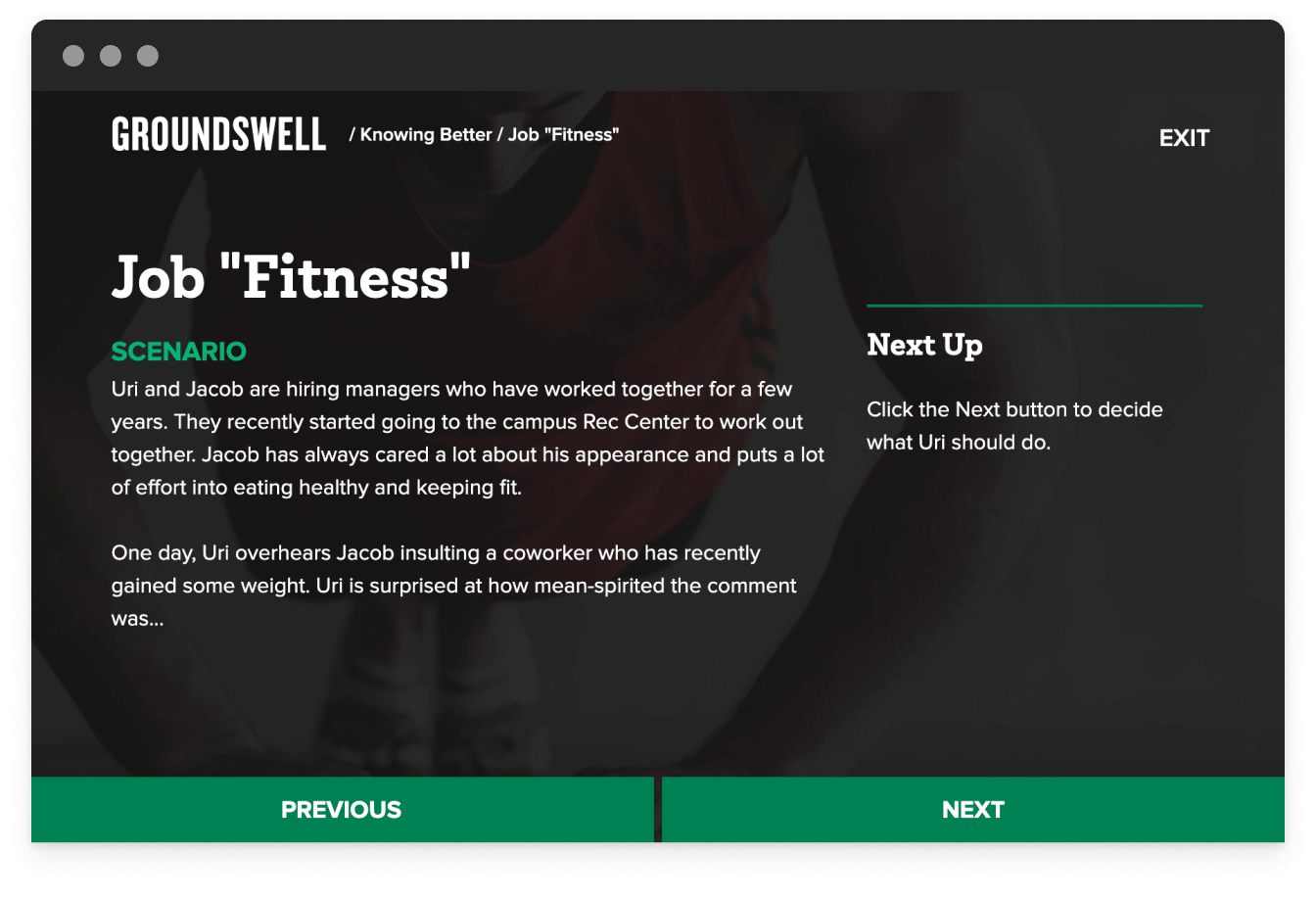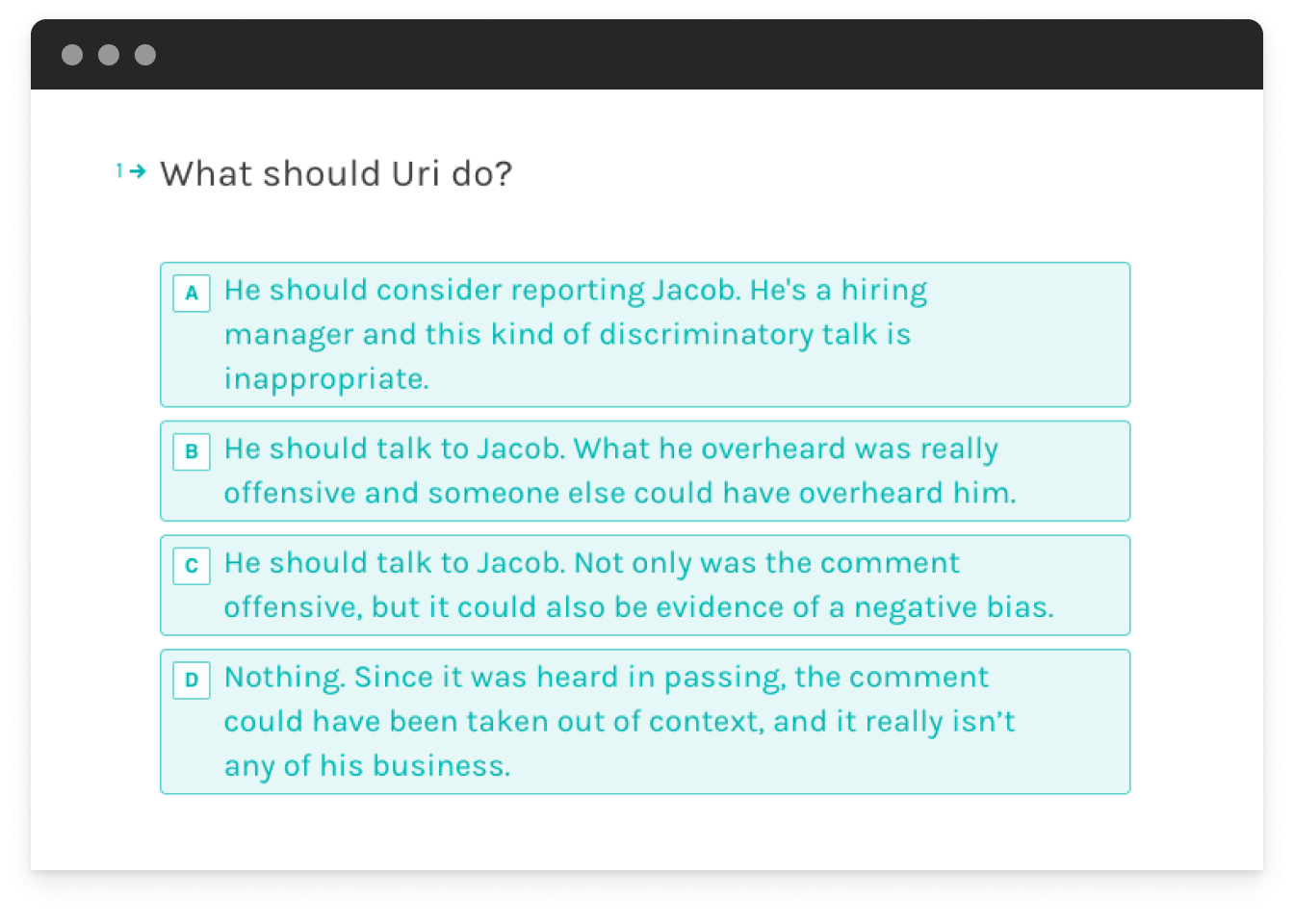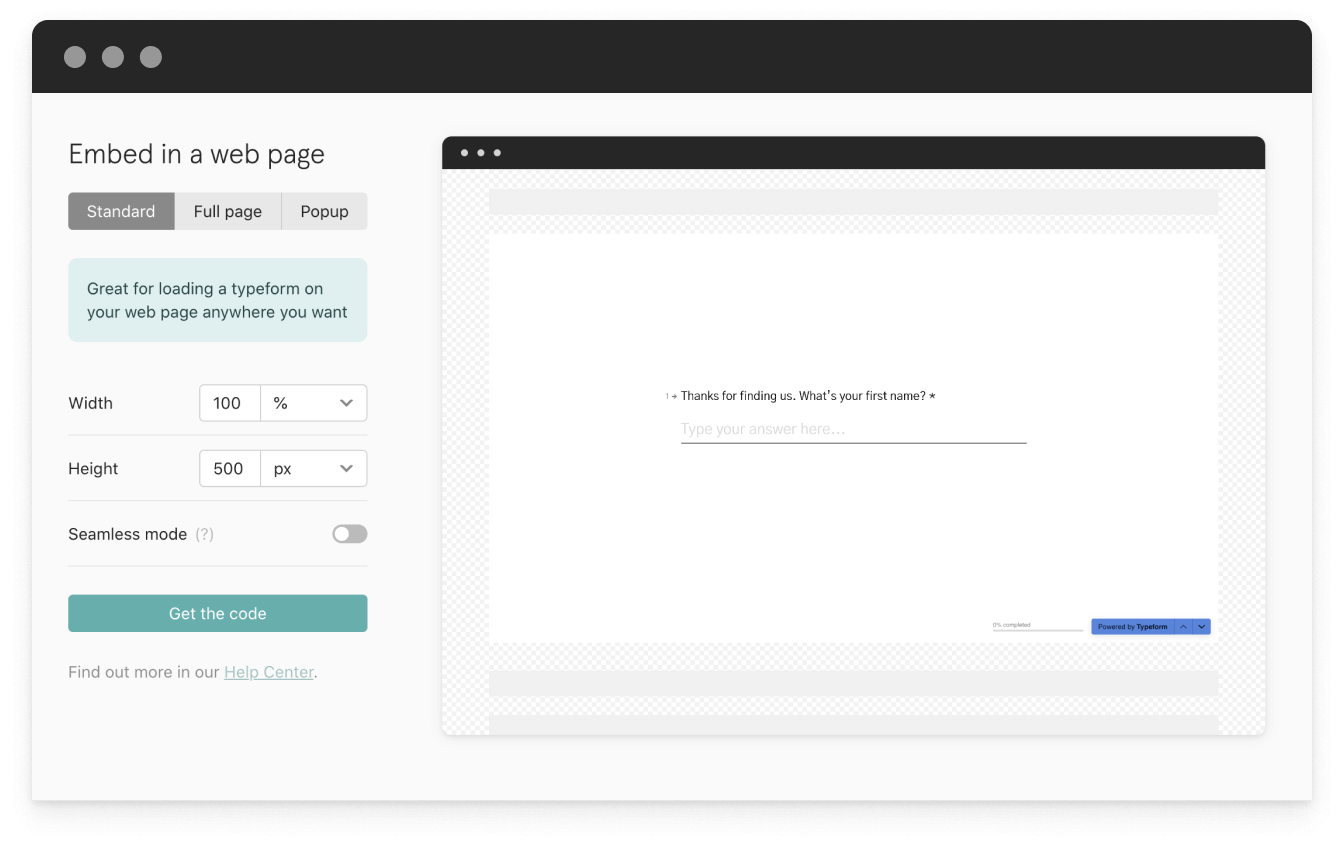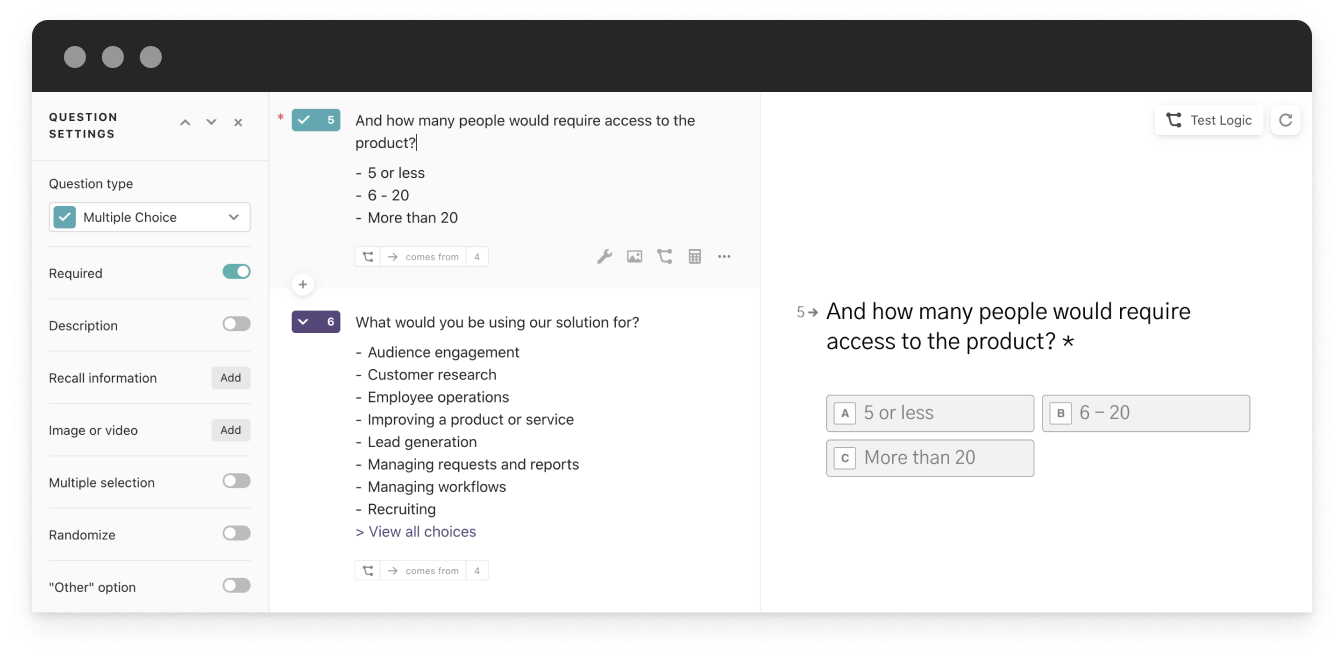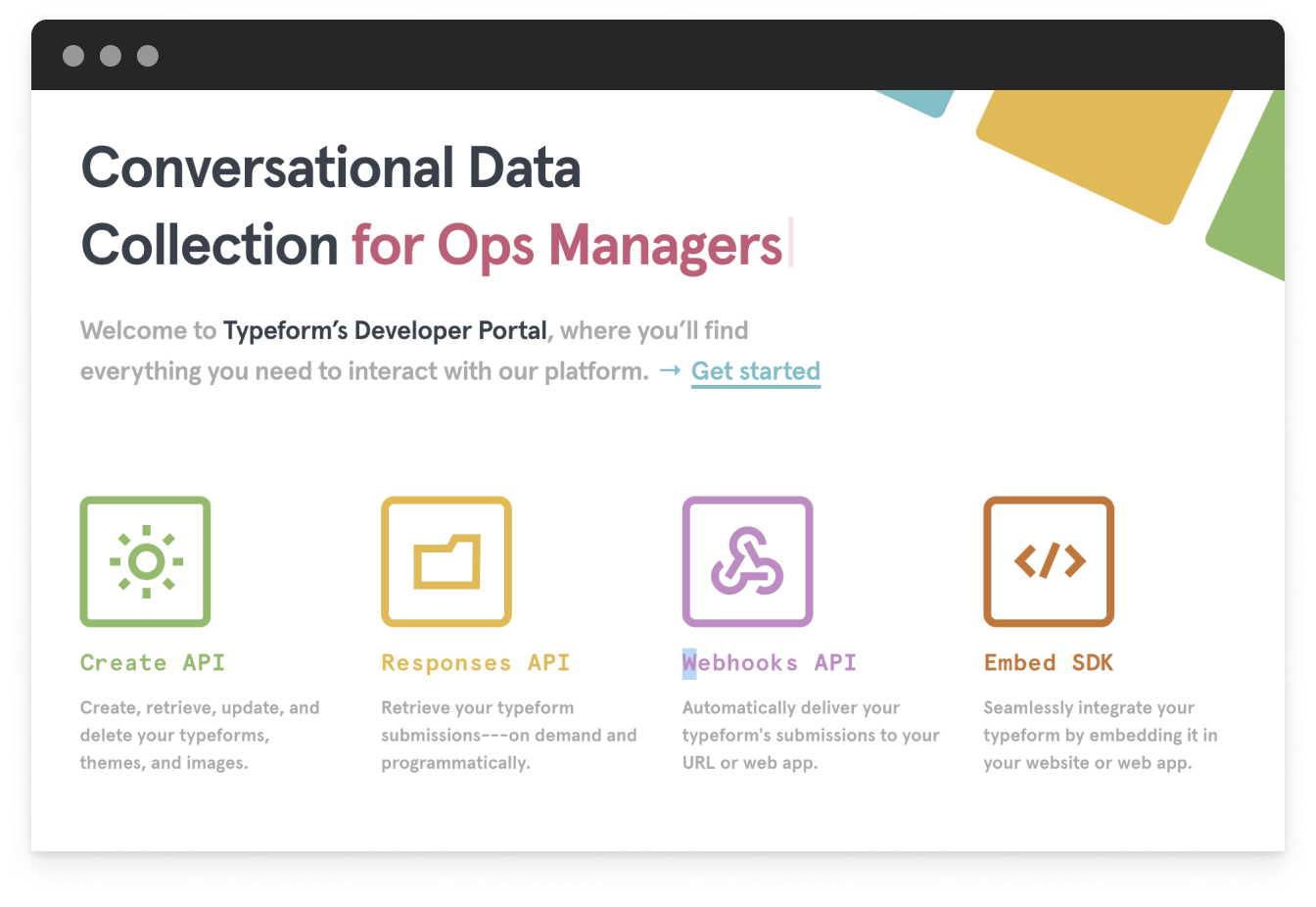Get Inclusive's fight against workplace discrimination and the typeform that helps them do it
Discover how inclusivity awareness is weaved into typeforms for prevention and compliance training to create a friction-free learning experience.<br>

You' re welcome here. Hearing this gives most of us a sense of validation. The desire to belong or be a part of something is ingrained into our DNA, a primal instinct for survival and happiness in this diverse human race.
This need for inclusivity runs deep. It' s also become an increasingly obvious threshold for employee workplace satisfaction. Here at Typeform, we’ve seen more than 800 forms created by 543 different businesses on the topic in the past year—collecting more than 69,000 responses. That' s a 40% increase in forms over the previous year. To say there' s a growing interest in this topic is an understatement.
But while campuses and offices are becoming more aware and less discriminatory, there' s still a gap to be filled. Ali Waqar, Founder of Get Inclusive, an organization that provides prevention and compliance training, understands this need:
So he set out to do something about it.
Get Interactive: the road to meaningful learning
Ali grew up in many countries including Dubai, Turkey, and the United States, where he experienced diversity first hand. He also experienced bias and discrimination in the US after 9/11. This got him interested in the topic of implicit bias, and he wanted to use his tech background to try to make a difference.
So he teamed up with a few like-minded individuals and built a learning management system. This became the foundation of Get Inclusive’s online training.
The team at Get Inclusive works to ensure that everyone who enters an organization, school, or business feels that they belong and are part of a diverse culture.
They do this by providing state and federal compliance programs through online training. Courses are tailored to different groups—from executives, HR teams, and employees to teachers and students. These programs teach how to approach complex issues like discrimination, bullying, mental health, sexual harassment, and other behavioral challenges that organizations face.
But when it came to the interactive quiz parts of the training, Ali wasn’t satisfied. The experience needed to feel smoother to keep people engaged. Because as Ali says:
Here’s how Typeform supports Get Inclusive’s training material so it can fulfill its mission: preventing discrimination through education.
Asking questions and making connections
Get Inclusive’s training courses rely heavily on scenario-based learning. There’s a relatable scene where a problem arises between students or coworkers, and the participant has to pick the correct course of action for one of the characters.
Here’s an example:
More realistic than you might think, right? But as well as writing nuanced, detailed scenarios that people can connect with, Ali also views user experience as a major factor in keeping people engaged.
And with some US states requiring 60 minutes of harassment prevention training for all employees—or 90 minutes for supervisors—each step has to flow smoothly to make sure people get to the end.
But as Ali discovered, designing surveys with great UX is hard. Until he found a shortcut.
Ali also looked at another SurveyMaker, but found it wasn’t possible to “tightly integrate it with the overall experience” like with Typeform. Ali’s team was after a very precise embedding setup:
“You don' t want people being taken somewhere else after they complete the question. You want to give them feedback and progress them to the following page. No other survey maker provided this seamless transition in and out of questions.”
So let’s see how a quiz looks within Get Inclusive’s training. And more importantly, let’s find out what Uri, the persona in the scenario above, should do.
Staying engaged: Typeform integration in action
Once someone clicks the ' Next' button on the scenario screen, they move onto this:
Each option leads to different feedback depending on what a person chooses—basically, the typeform both assesses and educates its participants. Here’s an example of the feedback for the best answer to this question:
If you went with option C, well done. You' re on thin ice, Jacob.
As for Ali’s decision to integrate Typeform’s quizzes into his trainings, he’s quite happy with his choice.
As well as the embedded quizzes, Get Inclusive also uses Typeform to make questionnaires that measure people’s attitudes towards topics before and after training. And they use Typeform’s APIs to gather data from the typeforms and plug it into their own system for reporting.
But most importantly, Typeform plays a small part in helping Get Inclusive make organizations across the US more tolerant, open, and accepting of people’s differences.
With 300,000 completed courses and counting, Ali and the team can be proud that their training is making a positive impact on people’s day-to-day lives.
How Get Inclusive did it
Here' s a few things Ali and team did to help their training quizzes hit the right note.
1. Embed quizzes for a seamless experience
Ali embedded typeforms into his training platform to create a seamless learning experience for participants. Discover the different ways to embed your typeform.
2. Ask just the right questions
Get Inclusive’s typeform quizzes give participants different feedback based on the answer they choose. Make your own typeforms smarter with logic jumps.
3. Offer people just the right responses
Most of Get Inclusive’s questions ask people to choose one option. But you can also let people pick as many as they want. Learn about your options with multiple choice questions.
4. Send your data exactly where you need it
Ali used Typeform’s APIs to hook the quizzes up to Get Inclusive’s database, so people’s answers and responses are collected in their back-end. Need to pull your Typeform responses into other apps? Try Typeform' s API for yourself.

